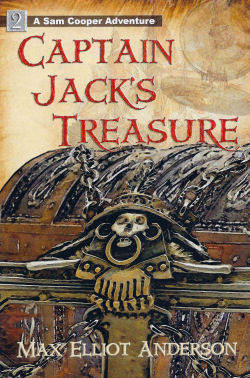|
A
year or two ago, when a friend of mine
returned from traveling in Japan, he told me that students in Japan’s
public schools wear uniforms, so it was easy for my friend to spot them
on the street. He noticed that as students waited on the street corner
for their busses, no one spoke. The children didn’t look at one
another, nor did they even seem to be aware of the others surrounding
them. How could they? Each had his or her own electronic device in hand
and were looking down at them. Not only were these children unaware of
those nearby, they didn’t notice the world around them, either. In
addition, my friend didn’t see one student reading a printed book.
You probably noticed something
similar around your house this past
Thanksgiving and Christmas. Younger members of the family sit around
with older members, but they don’t interact very much. Each seems lost
in a world of smart phones, iPads, or other electronic gadgets. Some
will even text back and forth while in the same room, without speaking.
Or they’ll play a Scrabble game while sitting far away from each other.
Whatever happened to gathering around a table and interacting while
playing family board games?
Don’t get me wrong. I love my
iPhone, and technology has greatly
simplified the life of an author. In the past, it might have taken
weeks to get a manuscript finished, copied, and sent to agents and
publishers. The cover design was an entirely different operation. Today
we’re able to share files in seconds, make decisions in minutes or
hours, and return the finished work electronically.
In writing and publishing
circles, much discussion continues about
e-books versus printed books. Some say that there’s nothing quite like
the smell of a new book or the feel of it in your hands. They love
turning real pages or placing a bookmark at the end of a chapter.
Others proclaim that electronic readers are the answer. There’s no
doubt that e-readers have made significant inroads into the
marketplace. It was reported that on this year’s Black Friday, that
dreadful shopping day right after Thanksgiving, four times more Kindle
devices were sold than at the same time last year. The numbers after
Christmas will likely be even more explosive. But is this a good thing?
Have you seen the video of a
one-year-old with an iPad and a
magazine (http://www.youtube.com/watch?v=aXV-yaFmQNk)? Did you notice
how quickly she became bored when the magazine didn’t “do” anything? It
just sat there, expecting to be read. In addition, some publishers are
including links in their e-book versions so that readers can click on a
link and see pictures or learn more about something that is written in
the story. For reluctant or struggling readers, this may become another
distraction resulting in the reader never finishing the story.
Studies have shown that certain
connections are made in the brain
while reading that simply don’t happen any other way. I believe that at
younger ages it may be important to limit the use of electronic devices
in favor of printed books in a quiet room and comfortable chair, where
the reader can take full advantage of those mental connections. Yet
others have reported that e-books provided the key that opened the
reading door for their reluctant readers.
As a child, I was already
distracted enough when it came to reading.
My mind could easily be invaded by sounds, voices, or music. Even today
when reading the paper—yes, we still take two newspapers—I need to be
in a quiet place. That means the TV and radio are off and no one is
talking. I suspect that an e-reader would have provided even more
distractions in my case as a child. This is one of those areas where
you’ll need to make your decisions on an individual basis.
|
Because
of technology, people in general have
shorter attention spans. Some publishers of children’s books have
experimented with chapter lengths of only one or two pages. Graphic
novels—books with very little text and lots of drawings or
pictures—have emerged in response to this change. They look more like
expanded comic books, but some of them are very popular. I think it’s
largely because struggling or reluctant readers would prefer not to
read all those words found in a traditional children’s novel.
At the same time, a recent
article in the New York Times
reported that publishers have been cutting back on traditional picture
books and the pendulum has begun swinging back to chapter books for
children. Whether those books will be read as e-books or be put in
print remains to be seen.
How is it at your house? If you
have more than one child or
grandchild, you’ve already discovered how different they can be. This
will also be true in their learning styles. Where one may prefer only
printed books, another may lean toward an electronic reader. One may
like books with few or no pictures, while the other enjoys a graphic
novel with lots of drawings and pictures accompanying the text.
The trick is to find their
individual interests and then provide
them with the proper material. When our two children were small, we
constantly took them to the library where we’d check out stacks and
stacks of books. Some selections were made according to our son’s
interests while others appealed more to our daughter.
The Internet provides wonderful
opportunities to find good books,
along with comments and reviews that help in making reading decisions.
Then you can check out books or buy them, depending on the reading
tastes of each child. No matter how it works for the children in your
family or circle of friends, we all know how important reading is for
the advancement and success of our children.
I wish you well in your
important position of selecting the right material for each of your
middle-grade readers.


|









